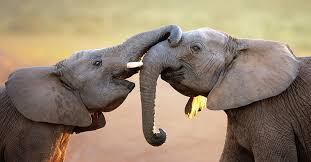There is no scientific consensus on the subject of emotion in animals, specifically which emotions certain species, including humans, experience. The debate primarily concerns mammals and birds, although emotions have also been proposed for other vertebrates and even some invertebrates.
Animal lovers, scientists, philosophers, and others who interact with animals have suggested answers, but the core question remains difficult to answer since animals cannot articulate their experiences.
Society acknowledges that animals feel pain, as demonstrated by the criminalization of animal cruelty. However, animal expressions of apparent pleasure are ambiguous, leaving open the question of whether these are true emotions or merely innate responses, potentially for approval or other instinctive cues.
This ambiguity fuels controversy, as there is no certainty regarding which view, if any, accurately reflects reality. Extreme behaviorists argue that human “feeling” may also be nothing more than a hard-wired response to external stimuli.
In recent years, research has expanded prior understandings of animal language, cognition, tool use, and even sexuality. Emotions arise in the mammalian brain or limbic system, a structure shared by humans and many other mammals.
Read Also: The History and Origin of Animals
Evidence on Animal Emotions

While human views on animal emotions have varied, scientific examination has provided limited insight beyond recognizing that animals possess the capacity for pain and fear, essential for survival. Historically, before the rise of fields like ethology, the interpretation of animal behavior was influenced by minimalism, known as behaviorism.
In this context, behaviorism rejected assigning animals any capability beyond what was necessary to explain their actions. This minimalistic approach avoided what was considered unwarranted anthropomorphism.
In simple terms, the behaviorist argument posits that there is no need to postulate consciousness and its near-human implications in animals if stimulus-response can sufficiently explain their behavior.
Different Views on Emotion in Animals
1. Philosophical Perspectives on Animal Emotions
Beth Dixon’s 2001 paper on animal emotion offers a cautious perspective on the subject:
Recent work in the area of ethics and animals suggests that it is philosophically legitimate to ascribe emotions to non-human animals.
Furthermore, it is sometimes argued that emotionality is a morally relevant psychological state shared by humans and non-humans. However, what is lacking in the philosophical literature that references emotions in non-human animals is a clear and defended account of the nature of emotion and the role emotions play in human nature.
Dixon argues that some analyses of emotion are more credible than others. Because of this, the thesis that humans and non-humans share emotions may be a more challenging case to establish than previously recognized.
Read Also: The Appearance and Features of a Lion
2. Scientific Approaches to Animal Behavior and Emotions

The study of emotion is a well-respected field, but it is typically confined to human emotions and conducted by academic psychologists. The standard reference work, The Oxford Companion to Animal Behavior, advises animal behaviorists to focus on studying animal behavior rather than attempting to understand underlying emotions.
Jeffrey Moussaieff Masson expresses a similar view:
While the study of emotion is a respectable field, those who work in it are usually academic psychologists who confine their studies to human emotions. The standard reference work, The Oxford Companion to Animal Behavior, advises animal behaviorists that “One is well advised to study the behavior, rather than attempting to get at any underlying emotion.”
The uncertainty and difficulty of interpreting animal emotion remain significant. An animal may exhibit certain movements, sounds, and brain or chemical signals when its body is harmed.
However, it is unclear whether this indicates an animal feels pain as humans do, or if it simply acts according to pre-programmed responses to specific stimuli. Similar questions can be raised for other animal activities, including those of humans. Many scientists view all emotions and cognition in both humans and animals as having a mechanistic basis.
Examples of Emotion in Animals
1. Primates
Primates, especially great apes, are considered candidates for highly developed capacities for empathy and theories of mind. Great apes have complex social systems, and young apes form strong bonds with their mothers.
When a baby chimpanzee or gorilla dies, the mother often carries the body for several days. Jane Goodall has described chimpanzees as exhibiting mournful behavior. Notably, the gorilla Koko expressed sadness over the death of her pet cat, All Ball.
2. Fish
A 2007 study by University of Guelph scientists in Canada suggested that fish might have individual personalities. The study, which focused on a group of visually identical trout, found that different fish within the same group displayed varying personality traits. Some fish were more willing to take risks in unknown environments, while others preferred solitude or different eating habits.
3. Felines
The emotions of cats have also been studied. Research has shown that cats can learn to manipulate their owners through vocalizations that resemble human baby cries. Some cats add a purr to their cries, making it more difficult for humans to ignore. Individual cats learn to make these cries through operant conditioning: when a particular cry elicits a positive response, the cat is more likely to use that cry in the future.
4. Canines
Research suggests that canines experience negative emotions in ways similar to humans, including certain chronic and acute psychological conditions. Martin Seligman’s foundational experiments and theory of learned helplessness, developed at the University of Pennsylvania in 1965, demonstrated this connection.
Under conditions of long-term psychological stress, about one-third of dogs did not develop learned helplessness or long-term depression, similar to humans who can adapt to stress.
These dogs displayed resilience, managing to cope with unpleasant situations despite past experiences. This resilience correlates with an optimistic attitude and lower emotional stress in humans.
The studies highlighted distinctions between individuals who adapt and those who break down under long-term psychological pressure, similar to research on brainwashing in the 1950s.
In this article, the concept of emotion in animals has been explored, along with different perspectives on animal emotion and examples from species such as fish, primates, canines, and felines.
Do you have any questions, suggestions, or contributions? If so, please feel free to use the comment box below to share your thoughts. We also encourage you to kindly share this information with others who might benefit from it. Since we can’t reach everyone at once, we truly appreciate your help in spreading the word. Thank you so much for your support and for sharing!
Read Also: Health Benefits of Yoga






